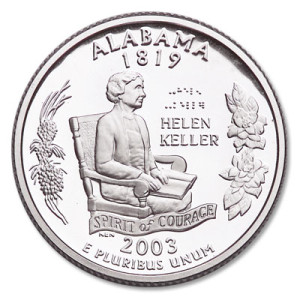Tactile Money Will be Great. I can just… feel it.
 Before long, Americans should start seeing new paper money with “tactile devices.” This is a fancy way of saying that the U.S. government will start making notes that are easier for sight-impaired individuals to identify. Sure, it’s easy enough for you or me to see a note’s face value, but for those who are blind or visually impaired, it’s impossible to tell a $1 from a $20. America’s paper money is all the same size, without any raised features to indicate how much each is worth.
Before long, Americans should start seeing new paper money with “tactile devices.” This is a fancy way of saying that the U.S. government will start making notes that are easier for sight-impaired individuals to identify. Sure, it’s easy enough for you or me to see a note’s face value, but for those who are blind or visually impaired, it’s impossible to tell a $1 from a $20. America’s paper money is all the same size, without any raised features to indicate how much each is worth.
Because of this, in 2002 the American Council for the Blind (ACB) filed a complaint about U.S. currency and its inaccessibility for the visually impaired. Even though the Treasury Department argued that making changes to America’s paper money would pose an “undue burden” for the government, a federal appeals court sided with the ACB in 2008.
Since then, both the Treasury and the Bureau of Engraving and Printing (BEP) have worked toward a “tactile” paper currency that will accommodate the needs of those who are unable to see the printed denomination.
We’re still a few years away from the debut of U.S. paper money with tactile devices – but it’s coming. A 2011 Coin World article outlined three enhancements that the BEP would put in place:
- A hand-held currency reader, which has already hit the market. Known as the iBill, it scans the corner of a note and tells the user (with about 99.9% accuracy) their notes’ denominations – either verbally, with a tone, or vibrations.
- Using a variety of vibrant colors and high-contrast numerals on America’s paper money. Larger numerals (and more color) started appearing on notes in the last round of redesigns.
- Tactile devices – the holy grail of paper money redesigns, since they will have the raised pieces that make them the easiest for the visually impaired to tell apart. The BEP is expected to begin testing tactile devices starting in early 2015.
 As a side note – did you know that when these new notes come out, they won’t be the first of America’s money to feature “braille?” In 2003, Alabama’s statehood quarter was released, honoring Helen Keller. It showed her name in both English and braille (though it was too small to be read), and was the first circulating U.S. coin to feature a braille inscription.
As a side note – did you know that when these new notes come out, they won’t be the first of America’s money to feature “braille?” In 2003, Alabama’s statehood quarter was released, honoring Helen Keller. It showed her name in both English and braille (though it was too small to be read), and was the first circulating U.S. coin to feature a braille inscription.
Then, in 2009, the U.S. Mint issued a commemorative silver dollar honoring the 200th anniversary of Louis Braille’s birth. This became the first American coin to feature readable braille.
Be on the lookout for these new notes once they make their debut – it will be a momentous occasion for those who are visually impaired and for collectors.



